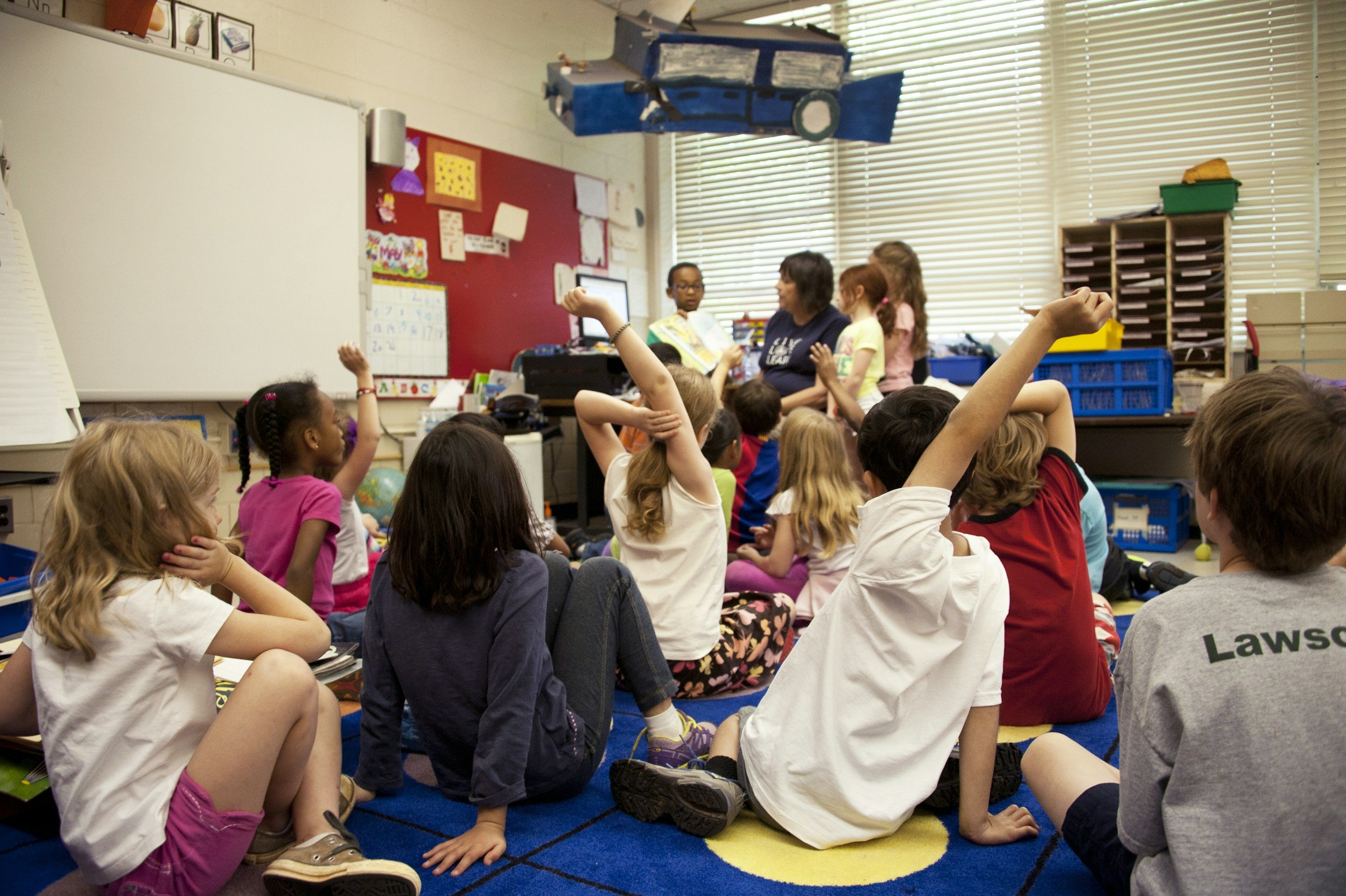
Positive Discipline in the Classroom
Comprehensive Training Programs for Educators

This interactive certification program is designed for teachers, counselors, school staff, and administrators who want an effective discipline approach that integrates social and emotional learning while reducing challenging student behaviors.
Become a Certified Positive Discipline Classroom Educator
Hands-On Learning
and Practice
✔️ Role-playing activities and experiential exercises for skill development
✔️ Real-life classroom scenarios to apply Positive Discipline principles
Social-Emotional Learning (SEL) Integration
✔️ Tools to teach emotional regulation, empathy, and problem-solving
✔️ Strategies to foster resilience and emotional intelligence in students
Positive Classroom Management
✔️ Non-punitive discipline strategies that promote cooperation, respect, and responsibility
✔️ Methods to reduce disruptive behaviors and create a safe, inclusive classroom culture
Parent-Teacher Partnership
✔️ Effective communication tools for engaging parents and caregivers
✔️ Strategies to establish consistent, respectful discipline practices between school and home
Community and Ongoing Support
✔️ Access to a community of educators sharing experiences, challenges, and successes
✔️ Continued guidance through group coaching sessions and Q&A discussions
Who is this training for?
This workshop is designed for anyone who supports children—teachers, counselors, paraeducators, specialists, and school leaders across all programs.
If you want a relationship-centered, research-based approach to guiding student behavior, this training is for you.
LEARNING OBJECTIVES
Develop a large teaching toolbox of kind and firm discipline approaches.
Establish explicit classroom structures and procedures.
Create an equitable classroom community based on mutual respect.
Understand the motivation behind students' misbehavior and how to encourage positive change.
Facilitate effective class meetings, teaching social skills, and problem-solving.
Learn Positive Discipline/Adlerian Psychology to use in the classroom and school community.
Generate an awareness of cross-cultural issues in facilitating social and emotional learning.
Training Format
In-Person: Two-day (13-hour) interactive workshop
Online: Six-session (13-hour) virtual training
Upon completion, attendees will earn recognition as a Certified Positive Discipline Classroom Educator.
Materials Included
Positive Discipline in the Classroom (Revised 4th Edition Book)
Positive Discipline in the School and Classroom Manual (Revised 6th Edition)
Teacher Tool Cards
When This Training is Most Beneficial
🔹During Challenging Classroom Dynamics
When managing disruptive behaviors, conflicts, or power struggles.
When traditional discipline methods are ineffective.
🔹At the Start of a New School Year or Semester
To set up classroom norms, routines, and expectations.
To establish respectful communication and cooperation from the beginning.
🔹In Diverse and Inclusive Classrooms
To create a learning environment where every student feels valued.
To address cultural, social, or emotional differences that impact dynamics.
🔹During Key Social-Emotional Development Stages
When students need guidance in regulating emotions and developing empathy.
To teach problem-solving and conflict resolution skills at critical developmental stages.
🔹When Strengthening Parent-Teacher Partnerships
To engage parents as active participants in their child’s growth.
To establish clear and consistent communication strategies between home and school.
🔹During Times of Change or Uncertainty
When students face transitions, crises, or emotional challenges.
To provide emotional safety and foster resilience and well-being.
Challenges This Training Addresses
Disruptive Classroom Behaviors
✔️ Teaches respectful discipline strategies to reduce behavioral issues
✔️ Builds emotional intelligence and self-regulation skills in students
Classroom Conflicts and Power Struggles
✔️ Provides communication tools to resolve conflicts peacefully
✔️ Encourages cooperation and mutual respect among students
Low Student Motivation
✔️ Establishes an inclusive, positive classroom culture
✔️ Inspires motivation and active participation
Lack of Social-Emotional Skills
✔️ Equips students with emotional regulation, empathy, and resilience skills
✔️ Strengthens positive social interactions and problem-solving abilities
Parent-Teacher Communication Gaps
✔️ Bridges communication between educators and parents
✔️ Aligns discipline strategies for consistency between school and home
Frequently Asked Questions
-
That is about Positive Discipline built on mutual respect, consistency, and student participation. It truly manages behavior while teaching social-emotional competencies for long-term skill building.
-
Some strategies include setting clear expectations and guidelines, holding class meetings, giving choices, teaching life skills, and acknowledging appropriate behavior. These create an atmosphere conducive to calm and cooperative learning.
-
Teachers can use positive reinforcement, logical consequences, redirecting, and problem-solving conversations. These methods change behavior without shaming or pulling students aside.
-
Positive Discipline works best in early childhood and focuses on age-appropriate routines, emotions, and expectations. It lays an early foundation of emotional regulation and cooperation.
-
Positive Discipline promotes motivation from within, promotes good teacher-student relationships and life skills, and transfers long-term success in behavior, contrary to traditional discipline, where it is mostly control or fear that motivates change and is short-term.
Transform Your Classroom with Positive Discipline
Join a growing network of educators committed to fostering respectful, cooperative, and engaged classrooms. Whether in person or online, this training equips you with the tools to create a thriving learning environment.



